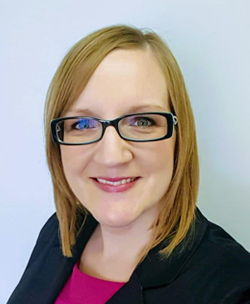What Is Term Life Insurance?
Most people know that life insurance is important, but they just can’t figure out which policy to buy or where to buy it. Confusing plans, high prices, and over-complicated jargon can make it seem overwhelming.
Term life insurance is a cheap and easy way to protect your family from the uncertainty that comes with someone passing away. It provides a death benefit in exchange for a monthly payment — this way, you’ll have peace of mind knowing that your family is protected if anything should happen.
But what is term life insurance? And is it right for you? This guide covers the many options to help you sort through the different kinds of life insurance. In the end, you’ll understand how to find a policy that works best for your family, especially if it is your first time purchasing a plan.
What Is Term Life Insurance?
Life insurance comes in two primary categories: term life and permanent life insurance. While permanent life insurance has higher premiums that can make coverage unaffordable for many families, term life is an excellent option. It’s reasonably priced and offers an amount of coverage that can protect your family if the worst should happen.
Term life insurance provides coverage for a set period of time. Policies typically last between ten and 30 years, though you may find some policies that cover 40 years. If you die during that time, a cash benefit is paid to your family or other beneficiaries that you name in your policy.
What Are the Benefits of Term Life Insurance?
Term life insurance has many benefits that you and your loved ones can rely on. It’s simple, affordable, and flexible to meet your needs.
It’s Simple
Term is the purest form of life insurance — it’s designed to pay your beneficiaries if you pass away prematurely, and that’s it. Term policies aren’t weighed down by complicated investment components. Instead, they’re much easier to manage.
You pay premiums to the life insurance company and you’re covered for the duration of the policy so long as you premiums are paid. When the term ends, you can choose to buy new coverage or let it lapse. Typically, by the time you reach the end of your term, your kids are grown, your mortgage is paid, and you no longer need life insurance.
When you work with Everyday Life Insurance, you’ll get matched with a policy that meets your coverage needs. That way, the ending of your policy term matches with the end of your need for coverage.
It’s Affordable
Because term life insurance offers your beneficiaries protection for a set number of years, a term plan is less expensive than a universal or whole life policy. If nothing happens to you during the set term, your policy will expire and the insurance company will never have to pay out the benefits — that’s why your term insurance premiums are lower. On the other hand, whole life policies pay out no matter when you pass, so premiums for those types of life insurance plans are higher.
It’s Flexible
With term life insurance, you get to choose the term length and coverage amount. You’re not stuck paying premiums for years of coverage you don’t need. You can also buy multiple, separate term life policies for different areas of your life.
For example, suppose you need a long-term 30-year policy for your growing family, but you only want a 10-year policy to protect against a business investment. In that case, you can buy a 30-year policy and a separate 10-year policy to meet your financial needs.
It’s easier than you might think, and Everyday Life Insurance plans make this super easy to do. Unlike whole life plans, term life plans do not have surrender charges (fees incurred if you transfer your policy).
Its Cost is Guaranteed
Once you enter into an agreement with the insurance company and purchase the policy, your insurance company cannot raise your premiums due to illness or other life circumstances. Your rates are guaranteed to remain the same throughout the life of the policy. Compare that to a whole life plan where your insurer has the right to change the cost of your premiums under certain conditions.
Term life takes the stress out of worrying that an unforeseen event could make life insurance more expensive.
It’s Great for Young Families
When considering what is term life insurance, you must understand that it’s an excellent option to financially protect young families. When young families are just getting started — buying homes and cars, getting pregnant and having children, saving for college and retirement — life can be stressful, especially financially.
Term life insurance gives young families peace of mind by protecting the things that matter the most. They’ll know they won’t have to break their budget to get that assurance. Plus, they won’t have to make a financial decision now that will last a lifetime, even though their circumstances will undoubtedly change.
Remember that term life is designed to last through this season of life. Once their kids are grown, they won’t need the same coverage. Then, they can either purchase a plan with less coverage to save money or cross off a budget expense that is no longer necessary.
Not All Types of Term Life Are Created Equal
Within the term life umbrella, you’ll discover many different types of plans available. Some forms of term life insurance can offer more benefits than others, so it is important to do your research and shop for the best rates before buying a plan.
Everyday Life Insurance is one brand of term life insurance that works differently from other term life products. Most term life companies offer one price for a bulk amount of coverage that remains the same for the life of the policy. But we understand that life changes over time. Even within a 30-year term, your life can change dramatically. Kids grow up and move out, or you could pay off debt and retire.
The Right Amount of Coverage at the Right Time
Because life changes, we offer dynamic term life policies that automatically change over time to keep pace with your life events. With Everyday Life Insurance, you get the exact right amount of coverage at the right time. This keeps you from paying for coverage that you don’t need and can save you thousands of dollars compared to other term life products.
For example, suppose another term life plan offers you $400,000 worth of coverage for a 30-year term. Your coverage is unchanging during that 30-year period, so your premium stays exactly the same, even though by year 18, your youngest will be leaving for college, you will have paid off more of your mortgage, and you don’t really need $400,000 worth of coverage anymore.
Everyday Life may offer you a plan that starts at $400,000 worth of coverage but decreases to $300,000 after 10 years, and down to $200,000 after that based on your unique life situation. It’s a fundamentally different approach to term life insurance and one that makes more practical sense. With Everyday Life, you only pay for what you need, when you need it.
Use The Ultimate Life Insurance Calculator tool right now to get a quote — it only takes two minutes and you don’t have to give us any contact information.



